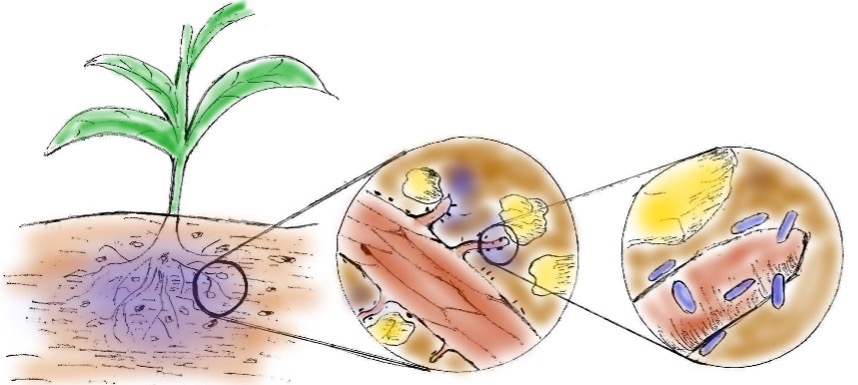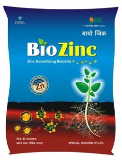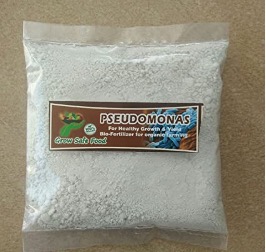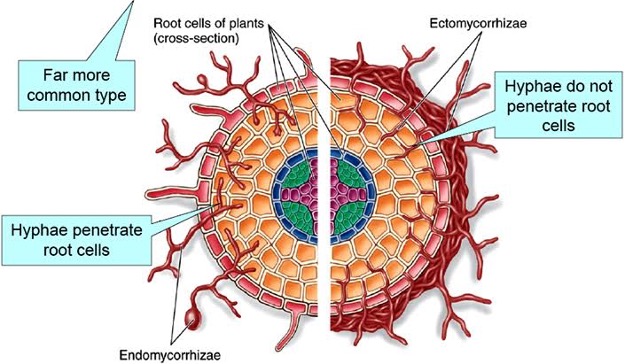🦠 Biofertilizers
Types, Benefits, Application
- Biofertilizers are defined as preparations containing living cells or latent cells of efficient strains of microorganisms that help crop plants uptake of nutrients by their interactions in the rhizosphere when applied through seed or soil. They accelerate certain microbial processes in the soil which augment the extent of availability of nutrients in a form easily assimilated by plants.
- Rhizosphere: It refers to the area of soil that is directly affected by a plant’s root system, associated root secretions and micro-organisms.

- Also known as microbial inoculants.
- Application sequence: Fungicide > Insecticide > Rhizobium (
FIR) - Use of biofertilizers is one of the important components of integrated nutrient management, as they are cost effective and renewable source of plant nutrients to supplement the chemical fertilizers for sustainable agriculture.
- Several microorganisms and their association with crop plants are being exploited in the production of biofertilizers. They can be grouped in different ways based on their nature and function.
N2 fixing Biofertilizers (NBF)
- Free living:
- Aerobic – Azotobacter, Beijerinckia, Anabaena
- Anaerobic – Clostridium
- Faultative anaerobic – Klebsiella
- Symbiotic: - Rhizobium, Frankia, Anabaena azollae
- Associative symbiotic: Azospirillum
- Endophytic: Gluconacetobacter, Burkholdria
Phosphorus solubilizing Biofertilizer (PMBF)/PSB Bacteria
- Bacillus megaterium var. phosphaticum, B. subtilis
- B. circulans
- Pseudomonas striata
Fungi
- Penicillium sp.
- Aspergillus awamori
P mobilizers
- Arbuscular Mycorrhiza - Glomus sp., Gigaspora sp., Acaulospora sp., Scutellospora sp. & Sclerocystis sp.
- Ectomycorrhiza - Laccaria sp., Pisolithus sp., Boletus sp., Amanita sp
- Ericoid Mycorrhiza - Pezizella ericae
- Orchid Mycorrhiza - Rhizoctonia solani
Silicate and Zinc solubilizers
- Bacillus sp.
- Zinc solubilizing bacterial bio-fertilizer (Azozink) developed to alleviate zinc deficiency in soils.

Plant growth promoting Rhizobacteria (PGPR)
Pseudomans flurescensetc.

Benefits
- Rhizobium Biofertilizer can fix 50-200 kg N/ha per year.
- Increases yield by 25-30% and 40-80kg N is left over in the field useful for subsequent crop.
- BGA can add up to about 20-25 kg N/ha to rice field.
- BF like BGA, Azotobacter and Azospirillum also supply growth regulator such as IAA, IBA, NAA, GA1, to GA33 and vitamins.
- Azotobacter and Azopirillum secrete antibiotics which act as pesticides so biofertilizers also act as ‘Bio-pesticides.’
- Azolla not only supplies N but also increases organic matter in form of biomass and increases soil fertility.
- It increases soil’s physical properties such as soil structure, texture, chemical properties such as water holding capacity, cation exchange capacity of soil, buffer capacity of soil etc.
- It proliferates useful soil micro-organism i.e. biological properties of soil.
- It is ecological friendly, technologically feasible and socially acceptable input to the farmers.
Application
- (a) Seed Inoculant:
- 20g of Rhizobium culture is required to treat 1 kg seed. One packet of Rhizobium culture contains 200g of Rhizobium culture.
- For small seeded pulses like moong , Arhar, lentil, berseem, lucerne, Kulthi, 500g of Rhizobium culture is sufficient for seeds required to be sown in 1 ha i.e. 2.5 packets/ha (since 1 packet = 200 g).
- For Groundnut, 1.5 kg of Rhizobium culture for 80-100 kg seeds for 1 ha i.e. 7.5 packets/ha.
- For soybean and Bengal gram: 1kg/ha i.e. 5 packets/ha.
- (b) Soil inoculant:
- 10 packets (2kg/ha) of carrier based Azotobacter and Azospirillum culture is mixed with 25 kg FYM and 25 kg soil and is broadcasted in the field uniformly before transplanting.
Fixation of atmospheric Nitrogen:
- Physio-chemical e.g. discharge of electricity in atmosphere.
- Bio-chemical by
- Activity of certain saprophytic bacteria
- Activity of symbiotic bacteria
- Activity of Blue green algae
- Bio-chemical or Biological N-fixation is the natural process of fixation of atmospheric N2 through the activity of soil micro-organisms. It can be 190 tonnes N/year, whereas, industrial-fixation (by reduction process) is around 50 tonnes N/year.
(A) Symbiotic N-fixation
- Many microorganisms fix nitrogen symbiotically by partnering with a host plant.
- The plant provides sugars from photosynthesis that are utilized by the nitrogen-fixing microorganism for the energy it needs for nitrogen fixation.
- In exchange for these carbon sources, the microbe provides fixed nitrogen to the host plant for its growth.
- One example of this type of nitrogen fixation is the water fern Azolla symbiosis with a cyanobacterium Anoboena azolla. Anabeana colonizes cavities formed at the base of Azolla fronds.
- Another example is the symbiosis between actinorhizal trees and shrubs, such as Alder (Aims sp.), with the actinomycete Frankia.
(a) Nodule Forming
- (i) With legumes: On the experimental basis Boussingault first proved that legumes use free N2 of air for their normal growth. The bacterial symbiont is member of genus Rhizobium. Leghemoglobin is the Oxygen-carrier in the N-Fixation in nodules and it also protects N-fixing enzyme i.e. Nitrogenase from oxygen, Leghaemoglobin has high affinity to O2 and it releases O2 to bacteroids slowly and in just sufficient quantity. Rhizobium bacteria is aerobic and heterotrophs. Green gram fixes 20kg N/ha whereas Lucerne, even more than 250 kg N/ha.
- (ii) With non-legumes: About 160 spp. from 13 genera of nonlegumes. The important group is angiosperms. The roots of these plants inoculated by soil actinomycetes of the genus Frankia, and Casuarina alder lives in association with casuarina (a xerophytic tree). Actinomycetes (or thread bacteria) are in between true fungi and bacteria. It develops best in moist and aerated soil. The growth of Bacteria and Actinomycetes ceases below pH 5:5 but no effect on Fungi.
👉🏻 Factors affecting Nodule formation & N-fixation
- pH: Legumes fail to develop nodules when pH less than 5.0.
- N & P-status of soil.
- Excess Moisture in soil: Since Rhizobia are aerobic, there is detrimental effect of excess moisture in soil.
(b) Without Nodule
- The bluegreen algae
Anabaena azollaeis having a symbiotic association with water fern, Azolla pinnata. Anabaena inhabits in the cavities in the leaves of floating fern Azolla. It fix 30-40 kg N/ha. Unlike Blue green algae it thrives well at low temperature. - Optimum temp: 20-30 °C
- pH: 5.5-7.0
- Azolla is applied in the main field as a green manure and dual crop. Azolla is allowed to grow on the flooded fields for 2-3 weeks before transplanting. Later water is drained and Azolla is incorporated by ploughing in. As a dual crop 1000-5000 kg/ha of Azolla is applied to soil one week after transplanting for better growth, 25-50 kg/ha SSP and 5-10 cm standing water continuously is maintained. When a thick mat forms, it is incorporated by trampling. N-fixation is around 25-35 kg/ha/year.
(B) Non-Symbiotic N-fixation
- By soil and water free living microorganisms.
(a) Fixation by Heterotrophs:
- Several groups of bacteria and BGA.
- (i) Aerobic bacteria:
- Azotobacter chroccum and Azotobacter vinefandi act in temperate zone soils; Opt. pH: 6.5-8.0
- Beijernckia: In tropical soils, tolerant to wider pH (opt pH 5.0- 9.0).
- (ii) Anaerobic bacteria:
- Clostridium: tolerant to wider pH (opt. pH 5.0-9.0).
- The above bacteria fix the nitrogen 5-20 kg N/ha/year. These bacteria are applied in the field by mixing 3-5 kg its inoculum with 5 tonne FYM per hectare.
(b) Fixation by Autrotrophs:
- Certain photosynthetic bacteria viz. Rhodospirillum (anaerobic) and Blue green algae,
Azotobacteris used for Rice, Cotton and SugarcaneAzospirillumis used for Sorghum.- Species of Azospirillum are able to form close associations with several members of the Poaceos (grasses), including agronomically important cereal crops, such as rice, wheat, corn, oats, and barley.
- These bacteria fix appreciable amounts of nitrogen within the rhizosphere of the host plants.
- So, they do not have direct physical contact with the plants called
associative symbiosis. RRB SO-20
Phosphate solubilising Microorganisms
- Though most soils contain appreciable amounts of inorganic P, most of it being insoluble forms, cannot be utilized by crops unless they are solubilzied.
- Soils also contain organic P that could not be utilized by plants only when it is mineralized.
- Phosphate solubilizing microorganisms not only able to solubilize insoluble forms of inorganic P but are also capable to mineralize organic forms of P, thus improving the availability of native soil P making their P available to plants.
- PSM can also solubilize P from rock phosphate (RP), slag or bone meal making their P available to plants. Thus, PSM biofertilizer being economical and environmentally safe offers a viable alternative to chemical fertilizers.
Mycorrhizae
- Mycorrhiza (fungus root) is the mutualistic association between plant roots and fungal mycelia.
- This association is characterized by the movement of plant produced carbon to fungus and fungal acquired nutrients to plants.
- Mycorrhizal fungi are the key components of the rhizosphere are considered to have important roles in natural and managed ecosystems.
- Mychoryza increase availability of – Phosphorus
👉🏻 Types of mycorrhiza
- Mycorrhizal associations vary widely in structure and function.
- Two main groups of mycorrhizae are recognized; the ectomycorrhizae and endomycorrhizae, although the rare group with intermediate properties, the ectendotrophic mycorrhizae.
1. Ectomycorrhiza
- The fungal hyphae form a mantle both outside the root and within the root in the intercellular spaces of the epidermis and cortex. No intracellular penetration into epidermal or cortical cells occurs, but an extensive network called the
Hartignetis formed between these cells. - Sheath or Mantle increases the surface area of absorbing roots and offers protection to the roots.
- Hartignet can act as storage and transport organ for P.
2. Endomycorrhizae
- Endomycorrhizae consist of three sub groups, but by far the most common are the Arbuscular Mycorrhizal (AM) fungi.
- Fungi under AM are the members of Endogonaceae and they produce an internal network of hyphae between cortical cells that extends out into the soil, where the hyphae absorb mineral salts and water.
- This fungus do not form an external mantle but lives within the root. In all forms, hyphae runs between and inside the root cells which includes,
- Ericoid mycorrhiza - Associated with some species of Ericaceous plants
- Orchid mycorrhiza - associated with orchid plants
- Arbuscular mycorrhiza - associated with most of the plant families

Mechanism of action
👉🏻 The beneficial effect on plant growth and yields following inoculation with VAM is attributed to
- Improved mineral nutrition, especially P (P, Zn, Cu, K, S, NH4)
- Mobilization of nutrients through greater soil exploration.
- Protection of host roots against pathogen infection.
- Improved water relation
- Better tolerance to stress like salinity, heavy metal pollution
- Protection against transplantation shock.
Celluloltic or Organic matter Decomposer (OMD)
- Such microorganisms are capable of decomposing Organic matter at a faster rate (Saprophytes); hence can be used as a fertilizer for quick release of nutrients
- Cellulolytic Organisms: e.g. Aspergillus, Penicillium, Trichoderma are cellulolytic fungi.
- Ligolytic Organisms: e.g. Arthrobacter, Agaricus.
- Biofertilizers are defined as preparations containing living cells or latent cells of efficient strains of microorganisms that help crop plants uptake of nutrients by their interactions in the rhizosphere when applied through seed or soil. They accelerate certain microbial processes in the soil which augment the extent of availability of nutrients in a form easily assimilated by plants.
- Rhizosphere: It refers to the area of soil that is directly affected by a plant’s root system, associated root secretions and micro-organisms.

- Also known as microbial inoculants.
- Application sequence: Fungicide > Insecticide > Rhizobium (
FIR) - Use of biofertilizers is one of the important components of integrated nutrient management, as they are cost effective and renewable source of plant …
Become Successful With AgriDots
Learn the essential skills for getting a seat in the Exam with
🦄 You are a pro member!
Only use this page if purchasing a gift or enterprise account
Plan
Rs
- Unlimited access to PRO courses
- Quizzes with hand-picked meme prizes
- Invite to private Discord chat
- Free Sticker emailed
Lifetime
Rs
1,499
once
- All PRO-tier benefits
- Single payment, lifetime access
- 4,200 bonus xp points
- Next Level
T-shirt shipped worldwide

Yo! You just found a 20% discount using 👉 EASTEREGG

High-quality fitted cotton shirt produced by Next Level Apparel